The concept of decorators in Python is an elegant solution to extend the functionality of functions or methods without directly changing them. This powerful technique allows you to add additional code to enable logging, for example, or to modify the behavior of existing functions. In this guide, you will learn how decorators work and how you can use them effectively.
Main insights
Decorators are functions that accept another function as an argument and return a new function. They are commonly used to:
- Modify function behavior.
- Log functions.
- Extend class methods.
Step-by-step guide
What is a decorator?
Let's start with the definition of a simple decorator. A decorator is essentially a function that takes another function as input and extends or modifies it.
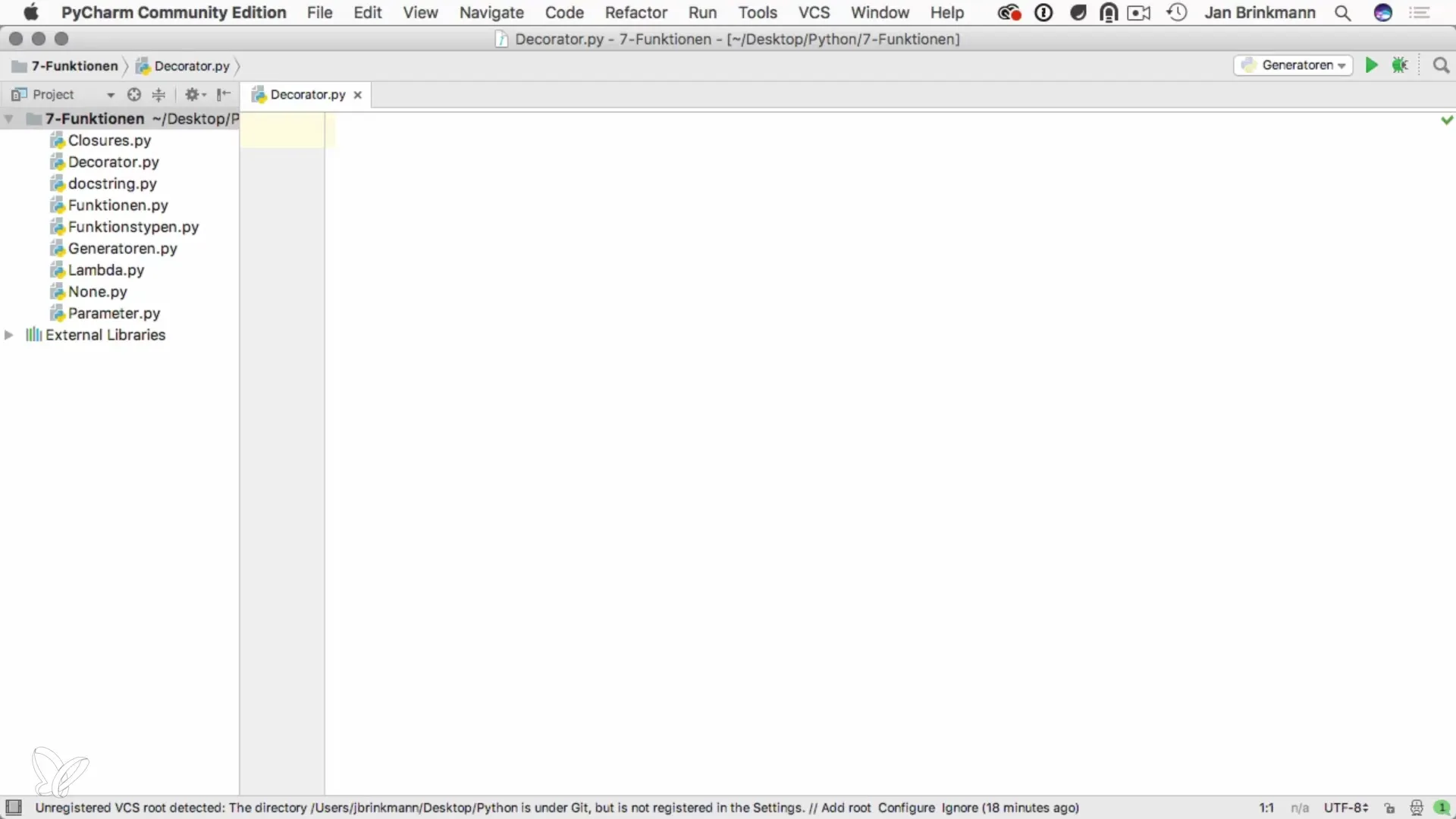
Getting started with an example
Suppose you want to extend the functionality of an existing function. Create a function called LogDecorator that simply adds logging information. You pass the function to be decorated as a parameter to this function.
Inside the decorator
Within your decorator function, you define a second function that handles the logging. This function will call the original function and return its results.
Ending the decorator function
You need to structure the decorator so that it returns the inner function instead of calling it immediately. This keeps the original function unchanged and able to be called at any time.
Applying the decorator
Now you can apply the decorator to a function. For example, take a simple function called add that adds two numbers. You can declare the LogDecorator before the function.
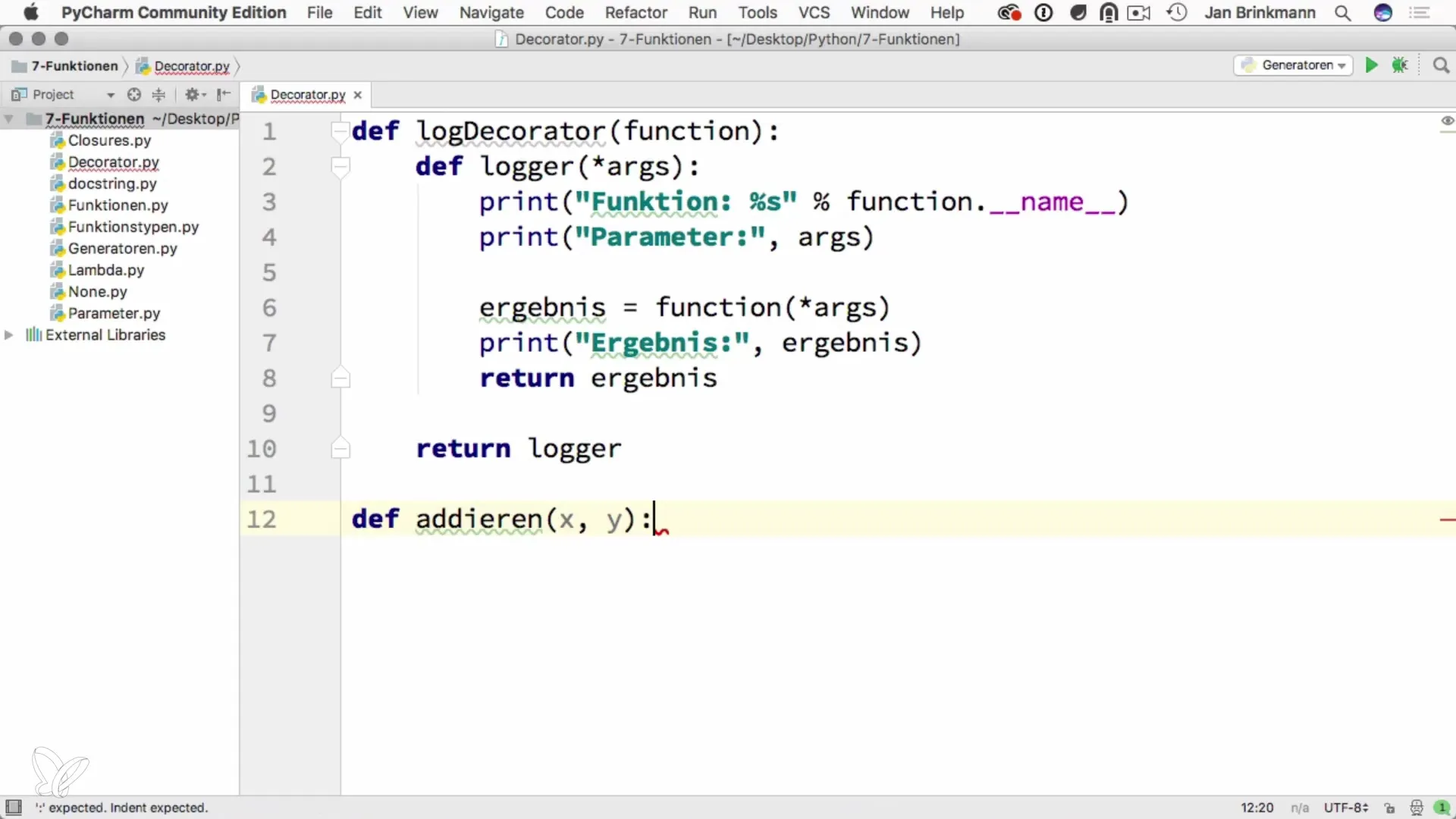
Using the function
Call the decorated function and observe what result is returned. The decorator will automatically activate and perform the logging while the original function continues to work.
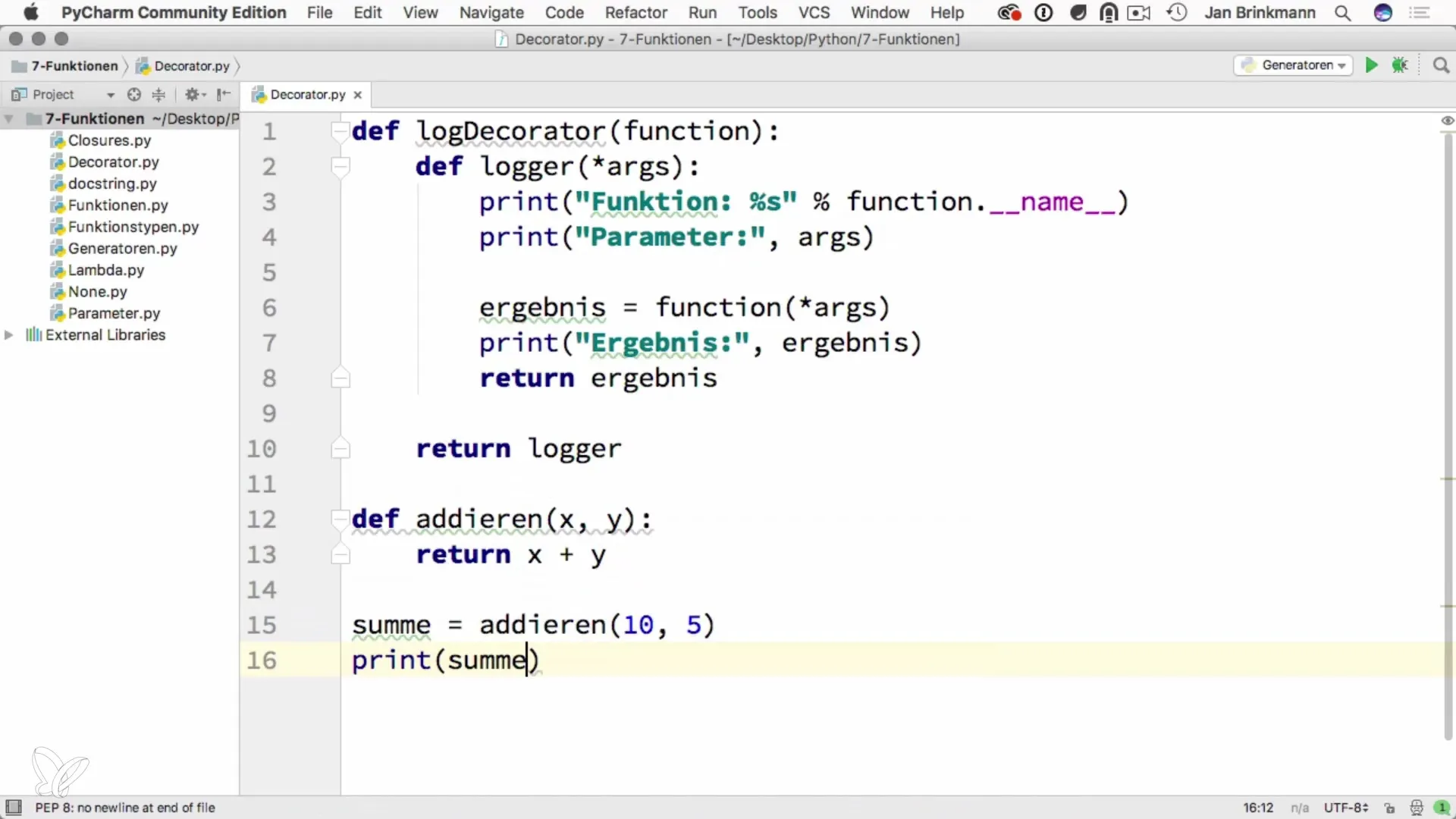
Multiple decorators
The beauty of decorators is that you can apply multiple decorators to a function. For example, if you create a SquareDecorator that squares the result, you can also apply this decorator to the same function.
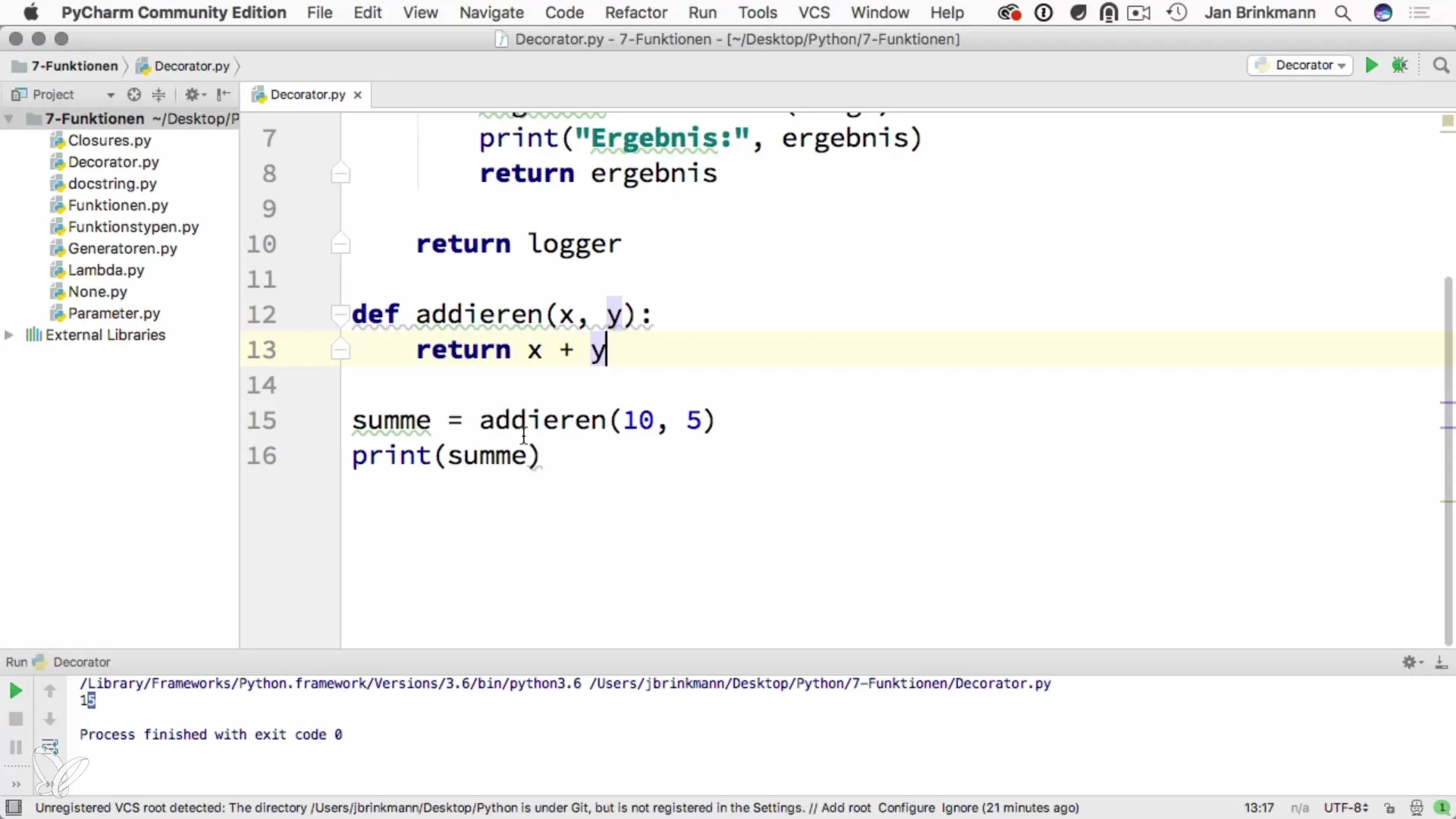
Order of decorators
Be aware of the order in which the decorators are arranged. The decorator closest to the function will be executed first. If you place SquareDecorator before LogDecorator, the result will be squared first and then logged.
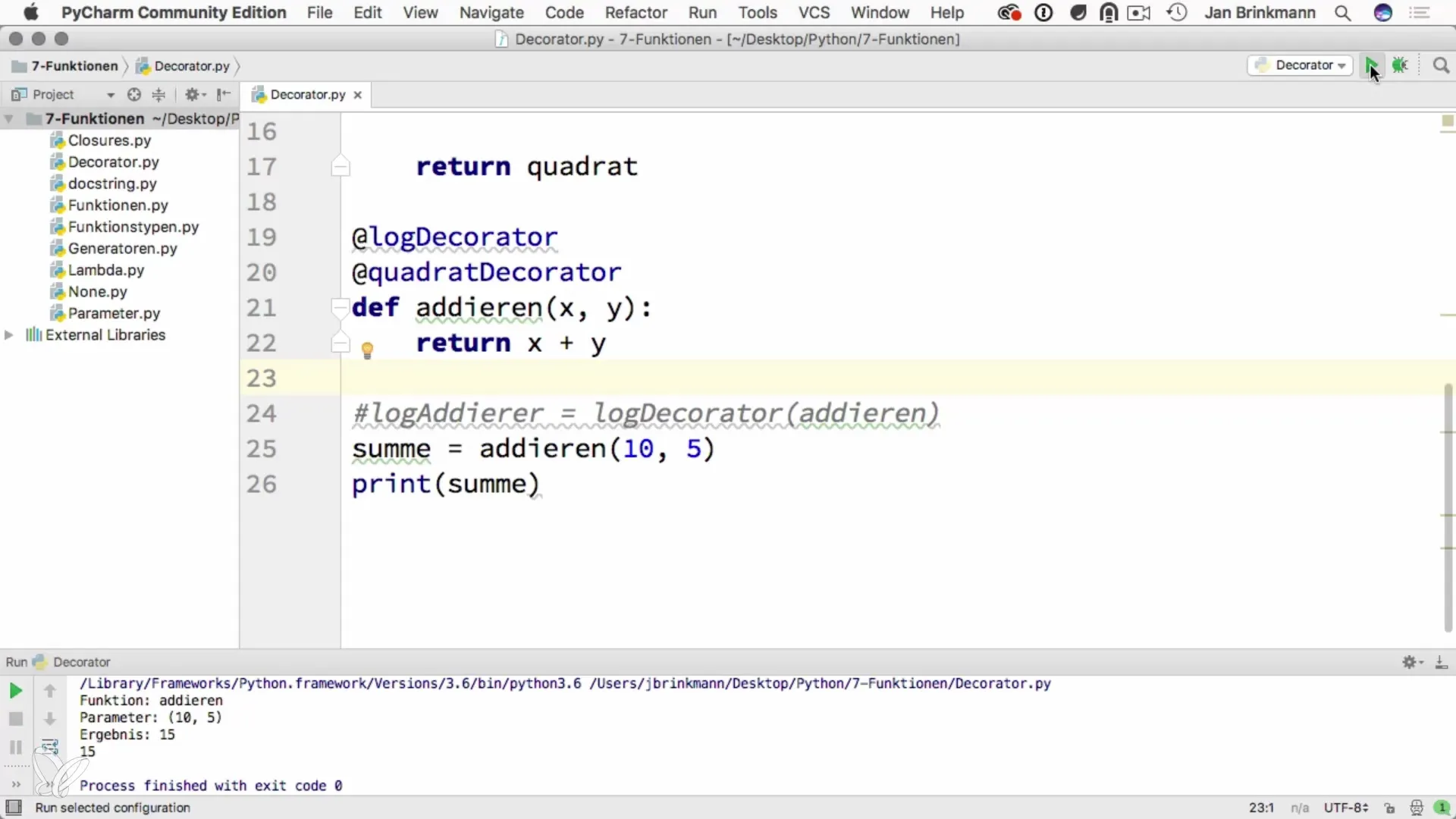
Purpose of decorators
Decorators are not just a cool feature, they also solve problems in software development. They allow you to modularize functions and help avoid repeated code. This makes your code cleaner and easier to maintain.
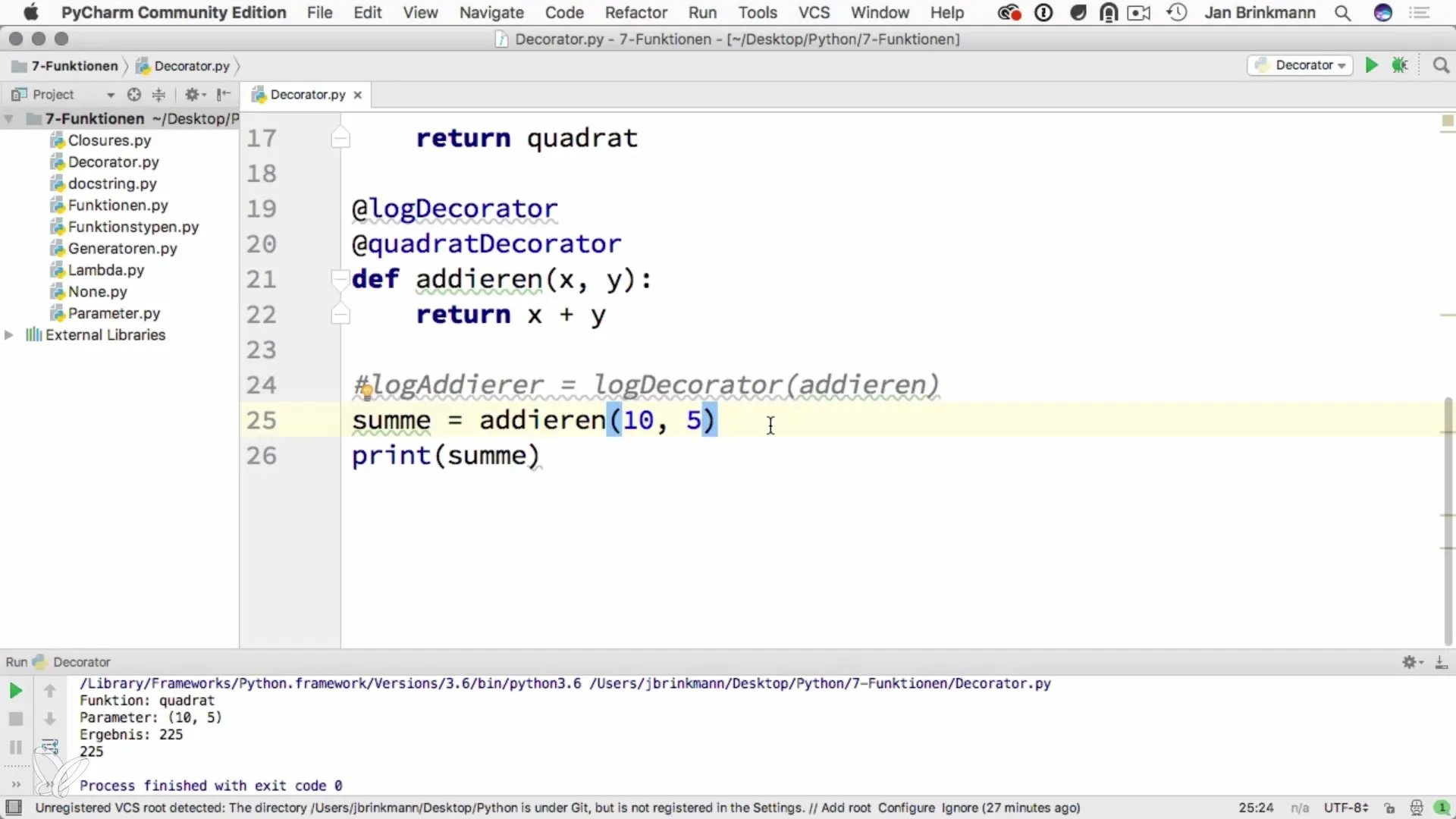
Summary – Understanding and Applying Decorators in Python
Decorators are a powerful concept in Python that help you extend and modify functions without directly touching their code. By applying decorators, you can make your code more flexible and clearer.
Frequently Asked Questions
What are decorators in Python?Decorators are functions that accept another function as input and extend or modify it.
How can I define a decorator?You define a function that takes another function as input and returns a new function.
Why should I use decorators?Decorators help avoid repeated code, improve the modularity and readability of your code.
Can I apply multiple decorators to a function?Yes, you can apply multiple decorators to a function, with the order being important.
What happens if I change the order of the decorators?The execution of the decorators occurs in the order they are declared. This affects the final result.


